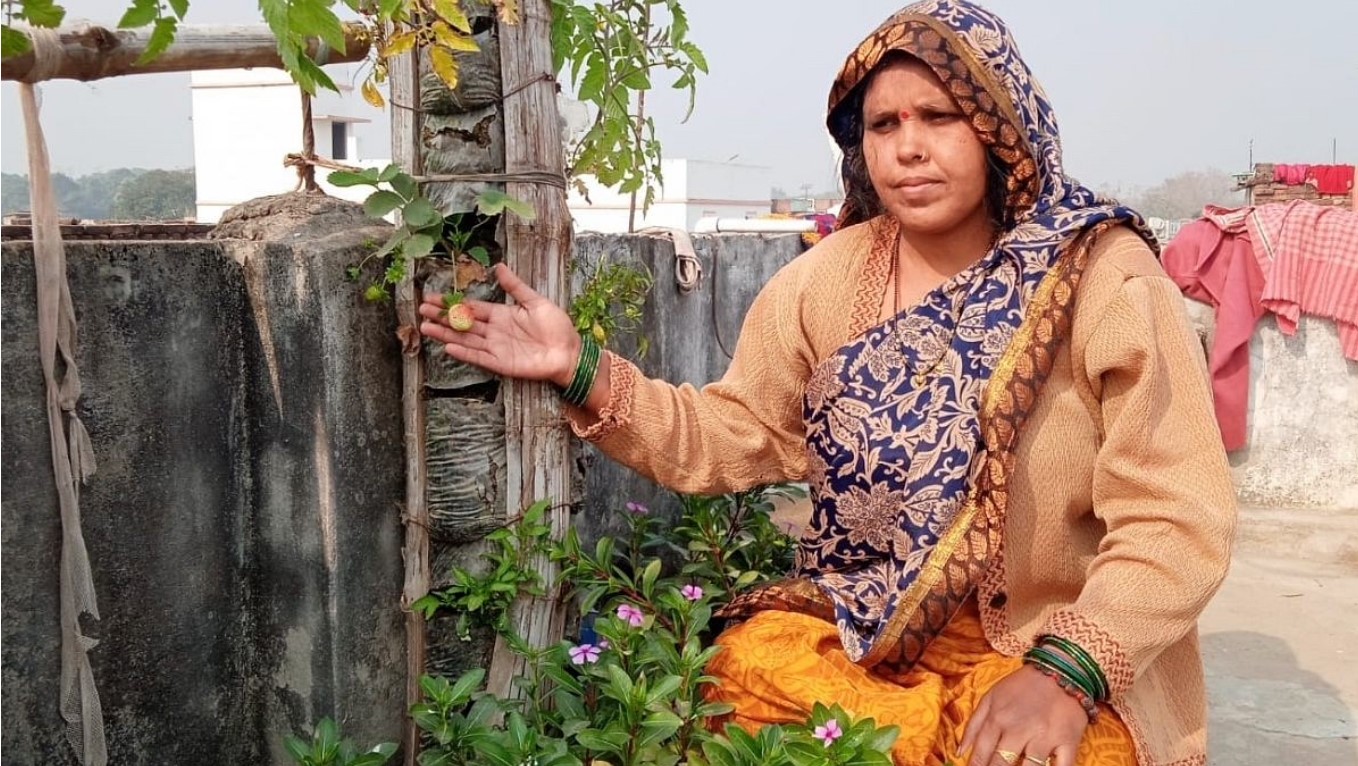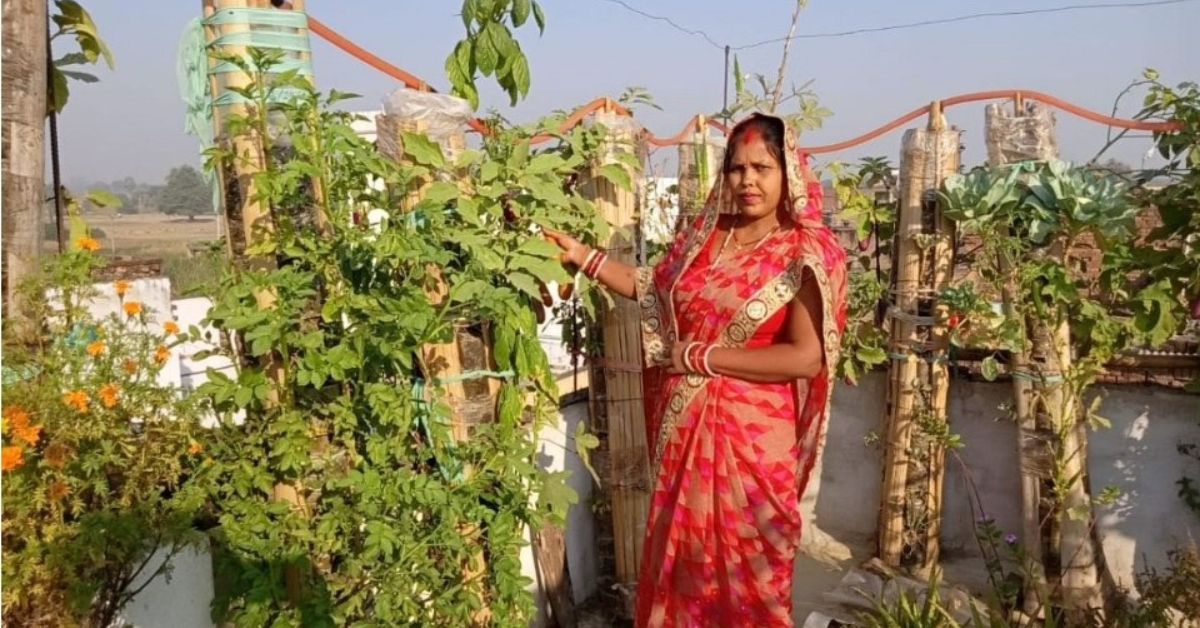Insufficient space is one reason why people hesitate to garden at home. But Sunita Prasad, a resident of Chhapra, Bihar, and a passionate gardener, found a way by installing PVC pipes as well as bamboo to create a vertical garden. Here she grows around 5 kg of vegetables every week.
This creative soul got the idea of gardening in pipes out of the blue. She says, “One day while selling goods to a scrap dealer, I took note of a pipe in his bicycle and bought it instantly in the hopes of creating something innovative out of it. But eventually, it was laid on the roof with some soil and many weeks later I noticed leaves sprouting from it.”
This was when she got the idea to grow vegetables in pipes. Today, she grows almost every seasonal vegetable in the form of a vertical garden made of PVC pipes and bamboos.
It was after her first phase of successful gardening in pipes that she turned to bamboo. It gave the same results.
“People have a misconception that vertical gardening is expensive but this can be solved by opting for bamboo,” she says.

The average cost of gardening in two five-foot PVC pipes is around Rs 1,000. Four to five varieties of vegetables can be planted here. The same can be done with bamboo costing Rs 50-60.
“The size of the pipe can be decided according to the area you have. All vegetables from leafy to tubers can be planted this way. I use the vermicomposting method for nourishing my veggies. Thus, the whole produce is organic,” shares the 45-year-old gardener.
How to garden using PVC pipes?
- Take a five-foot pipe, and cut as many parts according to the number of saplings/seeds you have.
- Fill ¾ th part of the pipe with soil and plant the seed/ sapling.
- Add a mixture of vermicompost or any other organic fertiliser to the soil.
- Make a hole in the middle of the soil and add sand.
- Water the sand so that it stays wet and the moisture reaches the bottom easily.
- There is no need to change the soil for the upcoming three years.
- New saplings/ seeds can be planted by simply making a hole in the soil.
- Neem water can be used to avoid pests.
Sunita says, “I now grow brinjals, okra, strawberries and even cabbage in these pipes. Seeing the successful harvest, an officer of the Kisan Vigyan Kendra was astonished. On his advice, I applied for the Kisan Abhinav Samman and received it later.”
The Kisan Vigyan Kendra at Manjhi also honoured her with an Innovation Award. She was also included in DD Kisan’s Women Kisan Award Show.
“What we eat daily contains chemicals. Vegetables grown from vertical organic farming will improve people’s health and save money,” says Sunita, who urges everyone to adopt this method.
Read this story in Hindi here.
Edited by Yoshita Rao
If you found our stories insightful, informative, or even just enjoyable, we invite you to consider making a voluntary payment to support the work we do at The Better India. Your contribution helps us continue producing quality content that educates, inspires, and drives positive change.
Choose one of the payment options below for your contribution-
By paying for the stories you value, you directly contribute to sustaining our efforts focused on making a difference in the world. Together, let's ensure that impactful stories continue to be told and shared, enriching lives and communities alike.
Thank you for your support. Here are some frequently asked questions you might find helpful to know why you are contributing?

